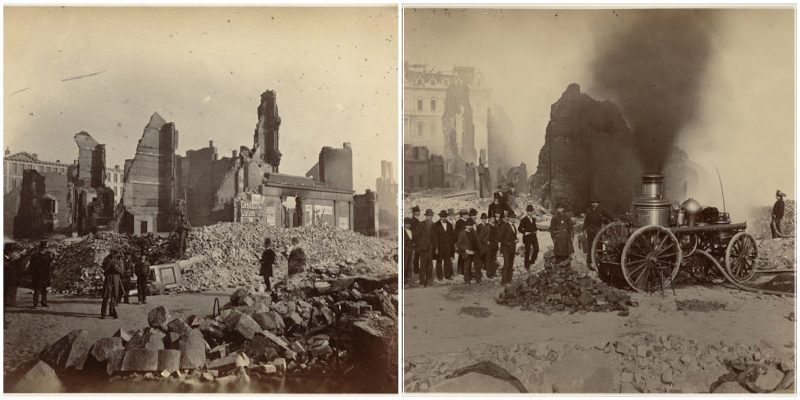The Great Boston Fire of 1872 was Boston’s largest urban fire, and still ranks as one of the most costly fire-related property losses in American history. The conflagration began at 7:20 p.m. on November 9, 1872, in the basement of a commercial warehouse at 83-87 Summer Street. The fire was finally contained 12 hours later, after it had consumed about 65 acres (26 ha) of Boston’s downtown, 776 buildings and much of the financial district, and caused $73.5 million in damage. At least 30 people are known to have died in the fire.
The fire rendered thousands of Bostonians jobless and homeless.Hundreds of businesses were destroyed, and dozens of insurance companies went bankrupt. However, the burnt district was quickly rebuilt in just under two years, mostly from the private capital of Boston’s commercial property owners.City planning during the post-fire reconstruction caused several streets in downtown Boston to be widened, particularly Congress Street, Federal Street, Purchase Street, and Hawley Street, and reserved the space for Post Office Square. Most of the rubble and ruins of the buildings destroyed by the fire was dumped in the harbor to fill in Atlantic Avenue.
Boston issued bonds for use by 16 private property owners in the downtown area to rebuild. A citizen who lived outside the area sued successfully, arguing that the bonds were a transfer of wealth from one set of citizens to another.
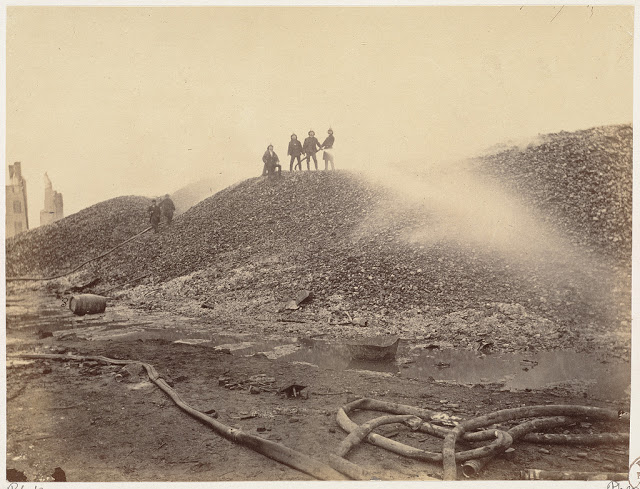
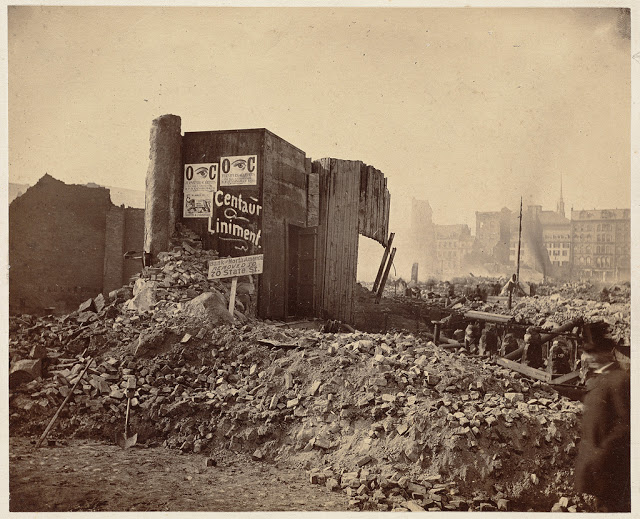
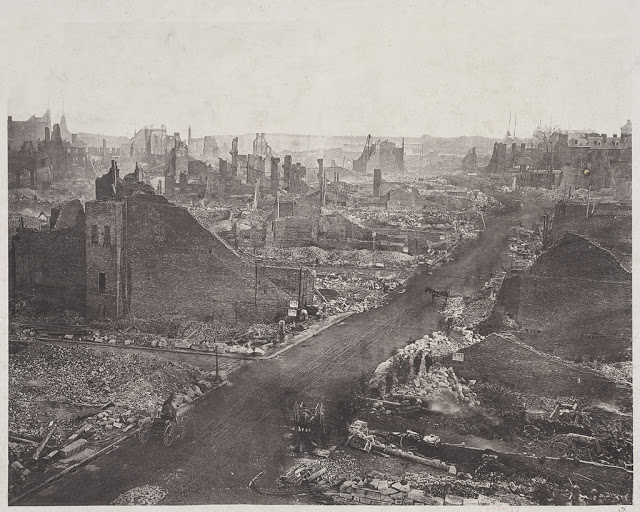
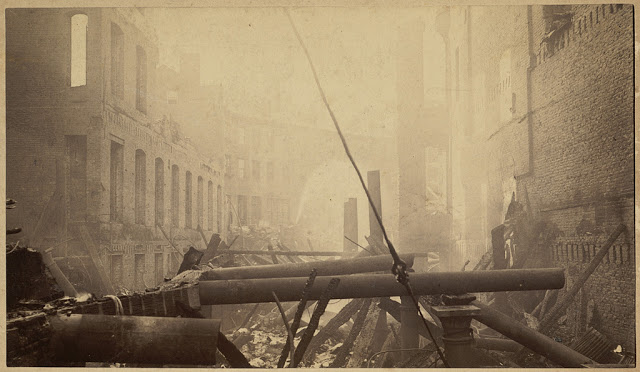
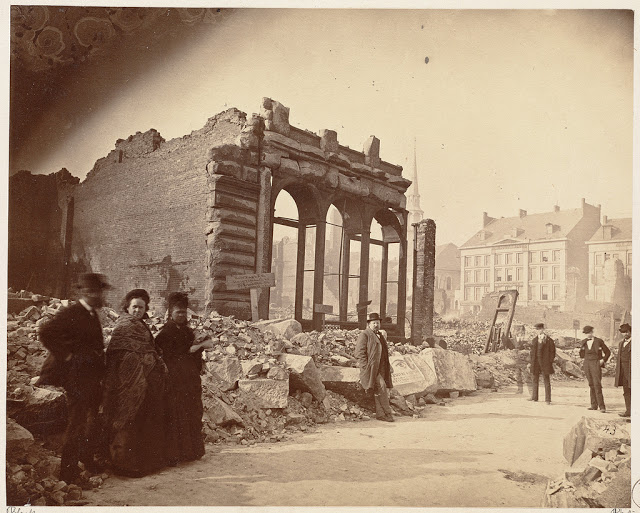
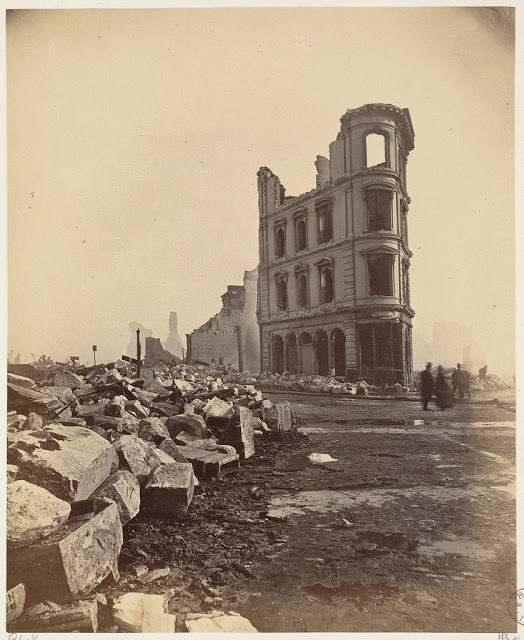
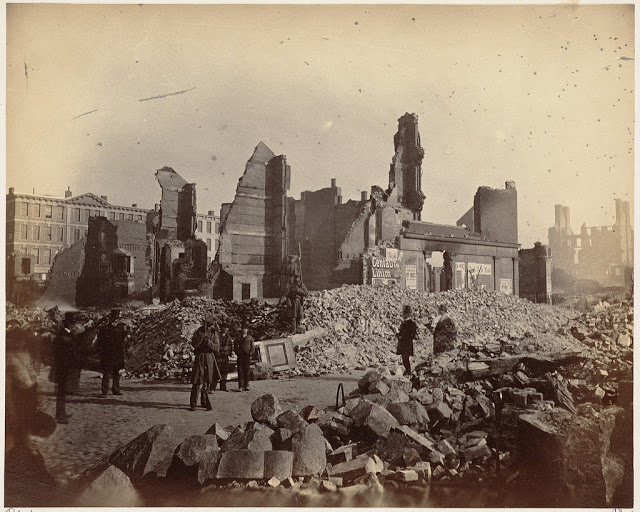
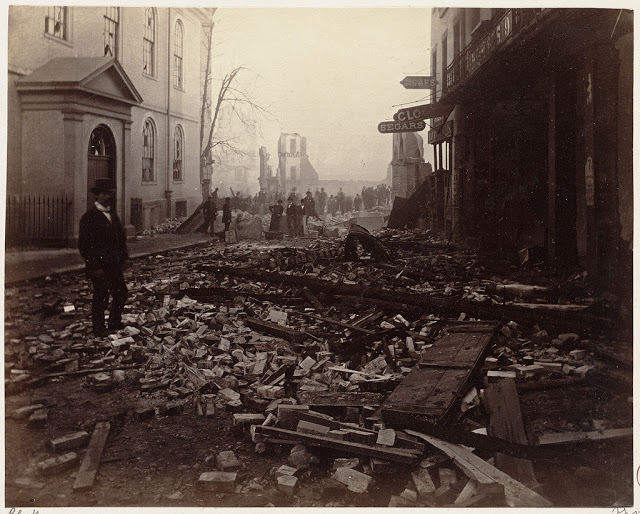
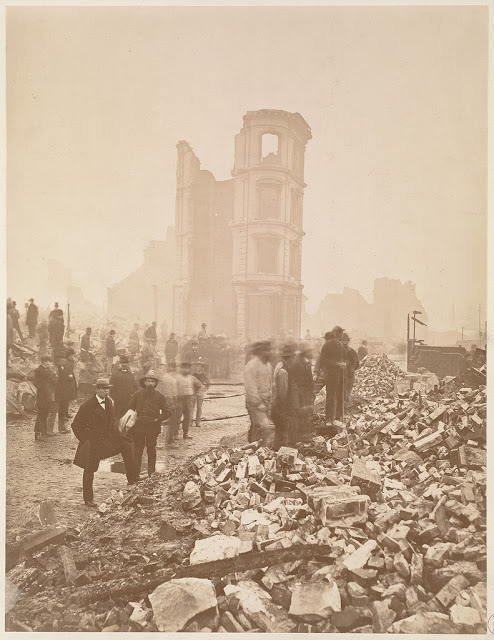
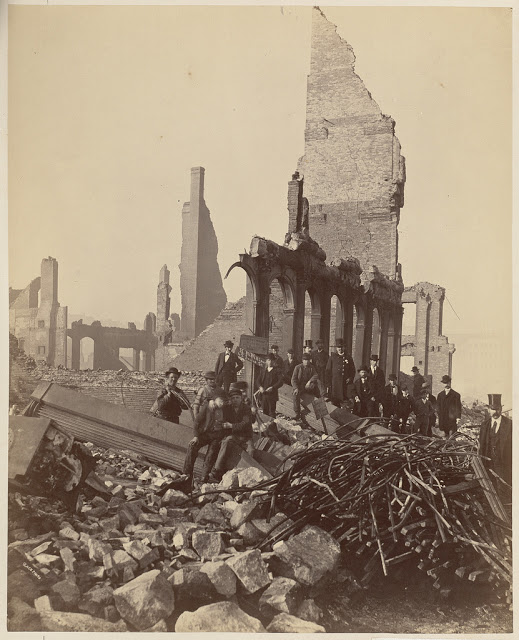
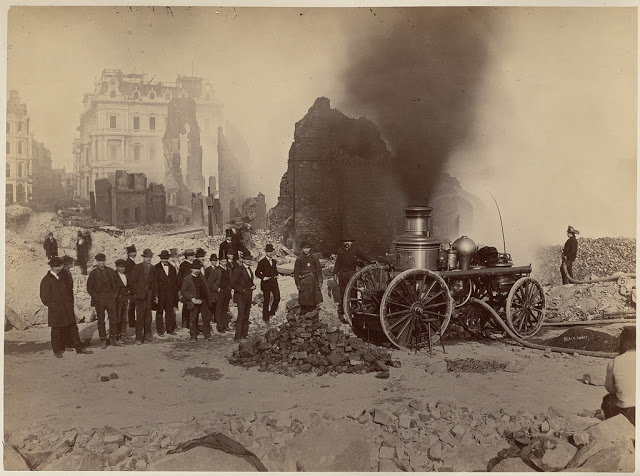
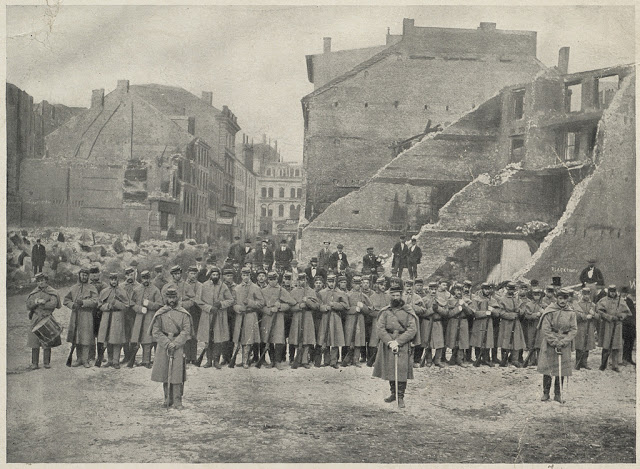
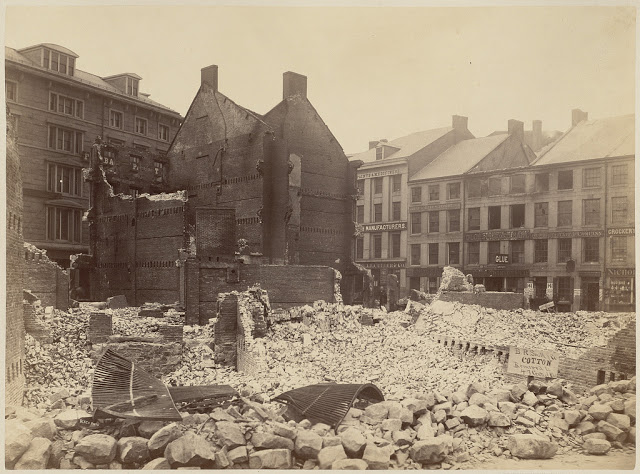
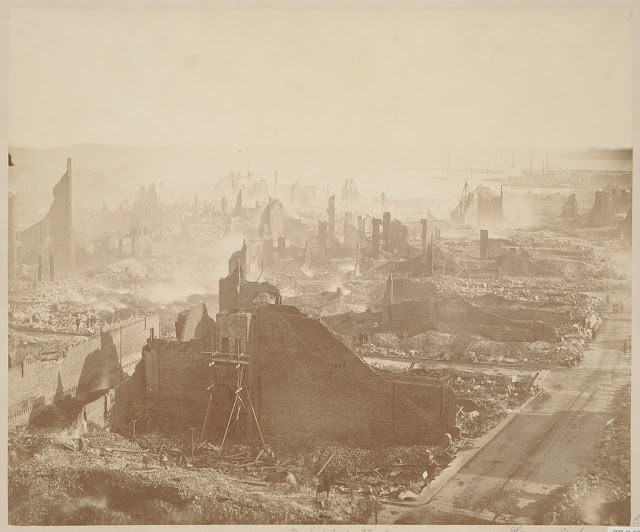

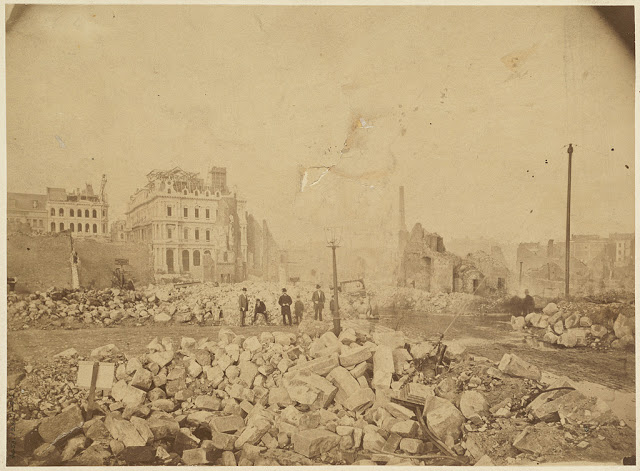
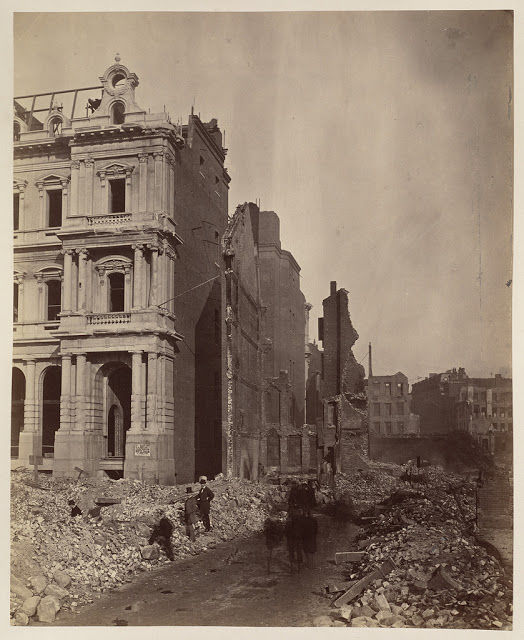

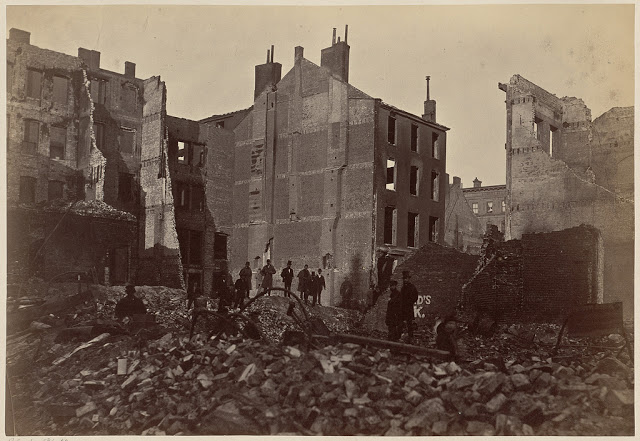
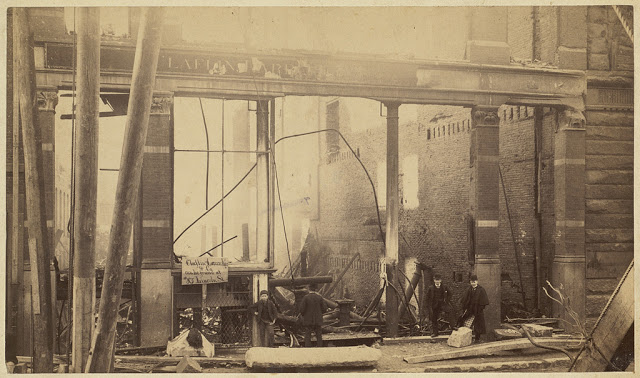
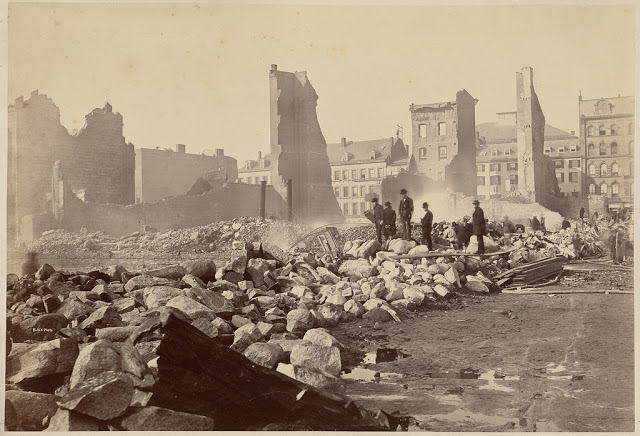
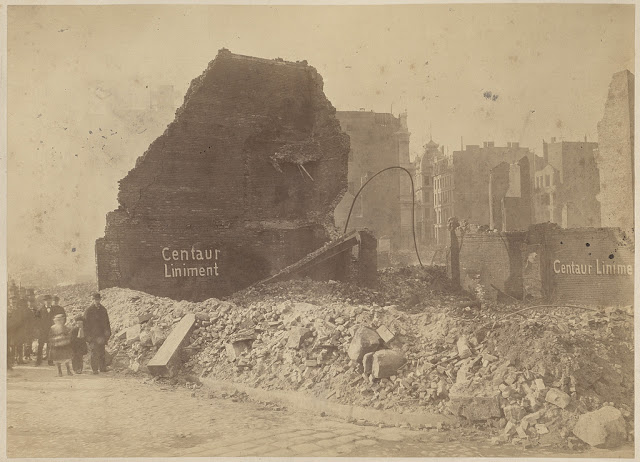
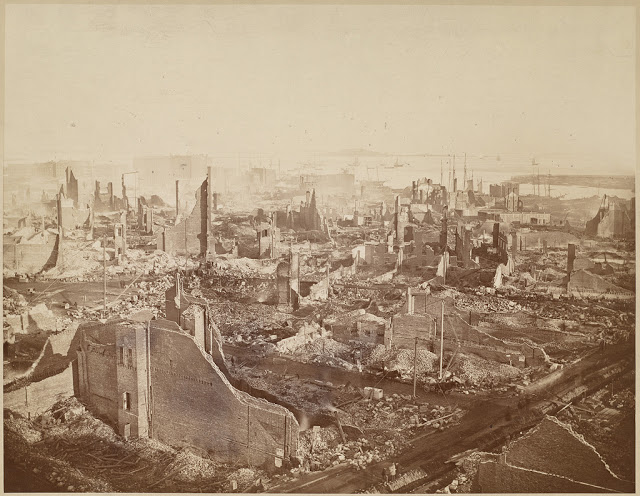
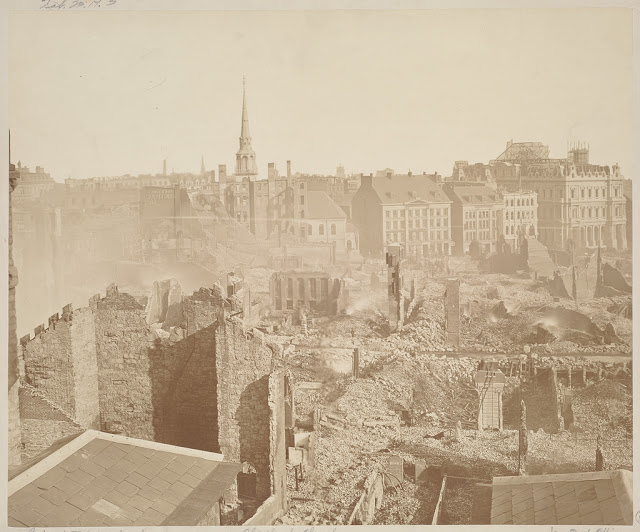
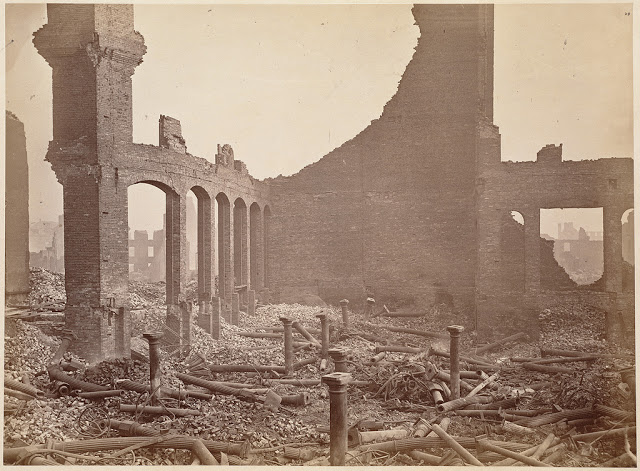
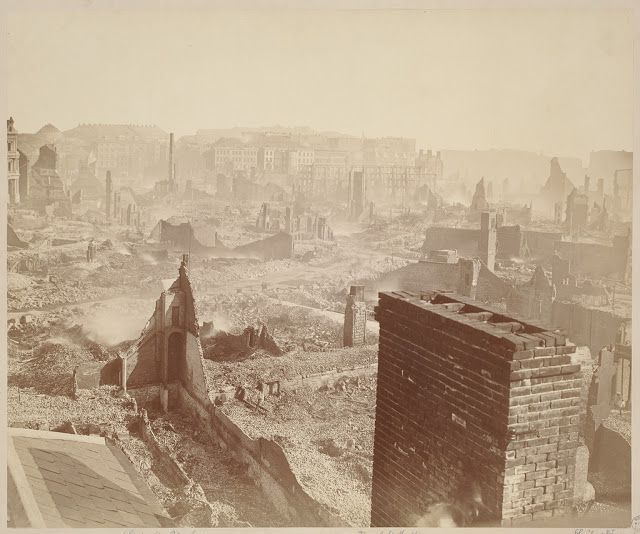
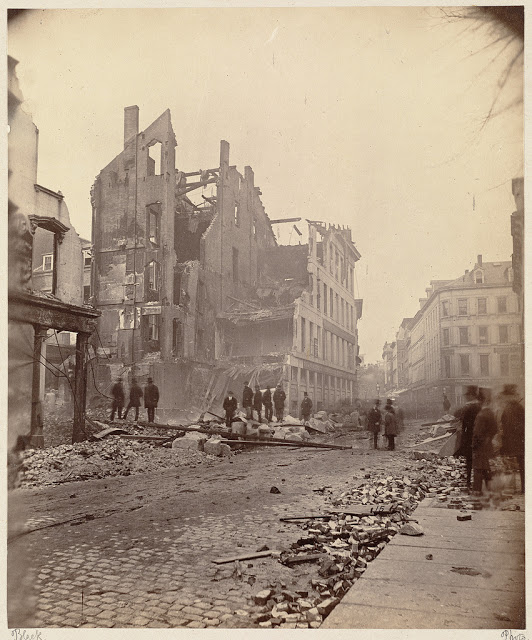
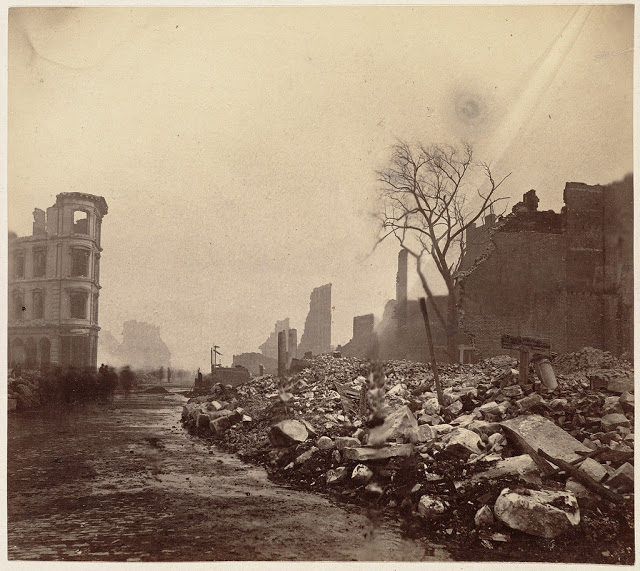
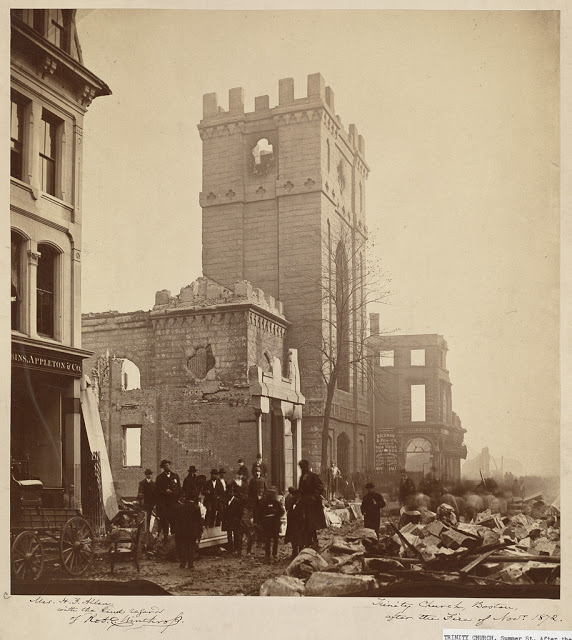
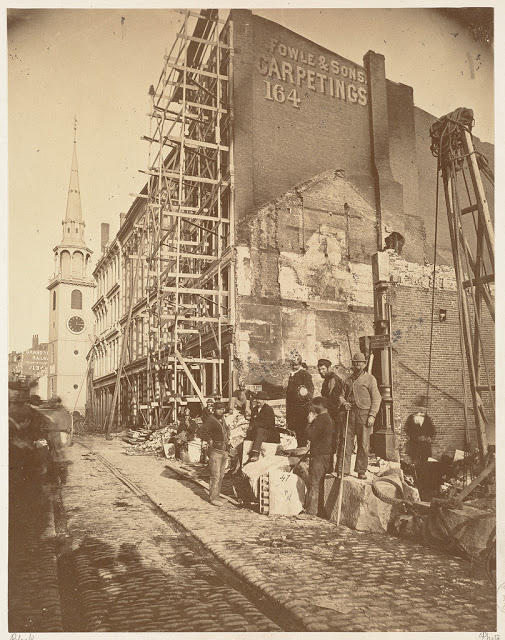
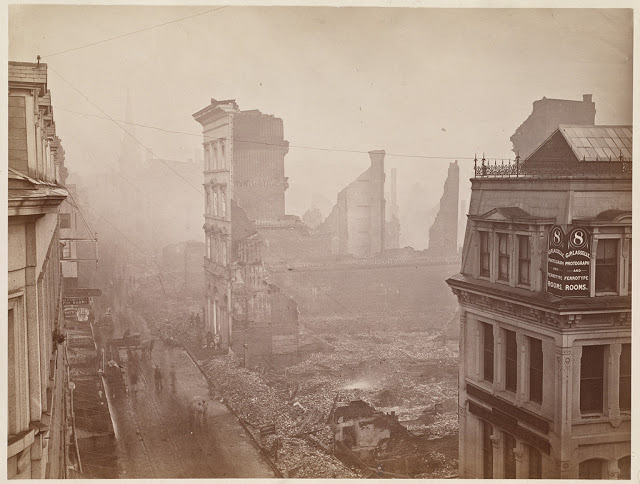
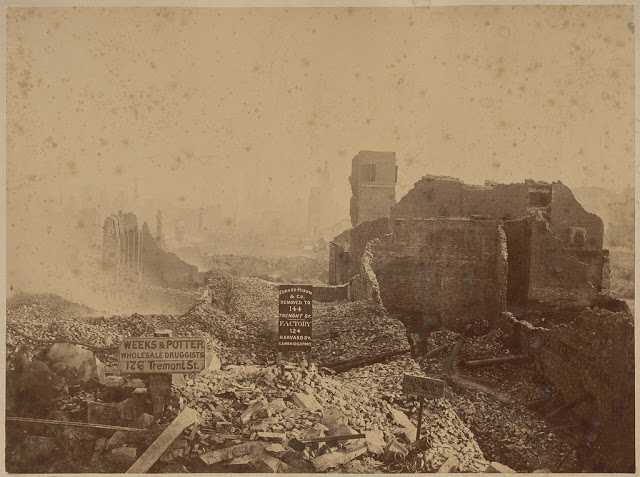
Many factors contributed to Boston’s Great Fire: Boston’s building regulations were not enforced. There was no authority to stop faulty construction practices. Buildings were often insured at full value or above value. Over-insurance meant owners had no incentive to build fire-safe buildings. Insurance-related arson was common. Flammable wooden French Mansard roofs were common on most buildings. The fire was able to spread quickly from roof to roof, and flames even leapt across the narrow streets onto other buildings. Flying embers and cinders started fires on even more roofs.Fire alarm boxes in Boston were locked to prevent false alarms, therefore delaying the Boston Fire Department by twenty minutes.
All Photos from Boston Public Library
